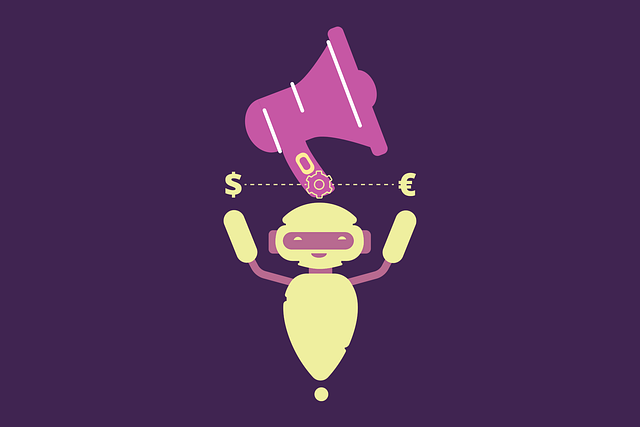AI upsell algorithms tailored for dine-in menus are transforming restaurant operations by enhancing customer experience and boosting revenue. Leveraging machine learning, these algorithms analyze historical data, customer preferences, and real-time trends to predict demand and offer personalized recommendations. By enabling servers to provide tailored suggestions without appearing pushy, AI increases the likelihood of additional sales while fostering customer satisfaction. Implementing AI sales forecasting solutions improves decision-making by optimizing inventory management, pricing strategies, and staffing levels based on precise forecasts. Continuous training and refinement are crucial for these algorithms to capture evolving consumer preferences, combining AI insights with human expertise for better business outcomes.
In today’s competitive restaurant landscape, accurate sales forecasting is vital for success. AI business sales forecasting solutions offer a game-changing approach, transforming traditional predictive methods. By leveraging advanced AI upsell algorithms for dine-in menus, restaurants can optimize inventory management and enhance customer experiences. This article explores the benefits of AI sales forecasting, delves into how AI algorithms drive upselling potential, and provides insights on implementing and optimizing these cutting-edge solutions for better business decisions.
- Understanding AI Sales Forecasting and Its Benefits for Restaurants
- Unlocking Menu Upsell Potential with AI Algorithms
- Implementing and Optimizing AI Forecast Solutions for Better Business Decisions
Understanding AI Sales Forecasting and Its Benefits for Restaurants

Artificial Intelligence (AI) sales forecasting is transforming the way restaurants operate, offering a competitive edge in an ever-evolving culinary landscape. By leveraging AI upsell algorithms for dine-in menus, establishments can enhance their customer experience and boost revenue. These algorithms analyze past sales data, customer preferences, and real-time trends to predict demand and suggest personalized upselling opportunities during the ordering process.
This technology enables servers to provide tailored recommendations, increasing the likelihood of additional sales without appearing pushy. For example, if a restaurant’s AI system predicts a customer might enjoy a specific dessert based on their previous orders or dietary preferences, the server can gently offer it as an upgrade or complement to their meal. Such strategic upselling not only increases revenue but also fosters customer satisfaction by offering tailored choices that enhance their dining experience.
Unlocking Menu Upsell Potential with AI Algorithms

In today’s competitive dining landscape, maximizing upselling opportunities is crucial for boosting revenue and enhancing customer satisfaction. AI upsell algorithms for dine-in menus are transforming how restaurants approach this challenge. By leveraging machine learning, these algorithms analyze past sales data, customer preferences, and menu trends to identify high-potential items that complement orders. This allows restaurant staff to proactively suggest personalized upgrades or alternatives, increasing the likelihood of customer acceptance and additional revenue.
The power of AI lies in its ability to go beyond basic recommendations by understanding individual customer tastes. It can detect subtle patterns in ordering behaviors and make data-driven suggestions tailored to each diner’s preferences. This not only improves sales forecasting but also fosters a more engaging dining experience, where customers feel understood and appreciated.
Implementing and Optimizing AI Forecast Solutions for Better Business Decisions

Implementing AI sales forecasting solutions, such as AI upselling algorithms tailored for dine-in menus, can significantly enhance a business’s decision-making process. These advanced systems analyze historical data, customer behavior patterns, and market trends to provide accurate forecasts. By integrating this technology, businesses gain valuable insights into demand fluctuations, allowing them to optimize inventory management, pricing strategies, and staffing levels accordingly. For example, an AI algorithm might predict higher diner volumes on certain days or suggest upselling opportunities by recommending additional menu items based on past purchases.
Optimizing these AI solutions involves continuous training and refinement. Businesses should regularly update their models with new data to capture changing consumer preferences and market dynamics. Additionally, combining AI forecasts with human expertise ensures a balanced approach. Sales teams can use the insights from AI systems to make informed decisions, adapt quickly to unexpected shifts in demand, and ultimately drive better business outcomes.
AI sales forecasting solutions, particularly those focused on optimizing dine-in menu upselling with advanced algorithms, offer a transformative approach for restaurants. By leveraging these tools, businesses can make data-driven decisions, improve revenue, and enhance customer satisfaction. Implementing AI forecast solutions streamlines operations, enabling restaurateurs to navigate market trends and adapt quickly. This technology isn’t just a trend; it’s a game-changer that empowers restaurant managers to unlock hidden menu potential, ensuring success in today’s competitive culinary landscape.
